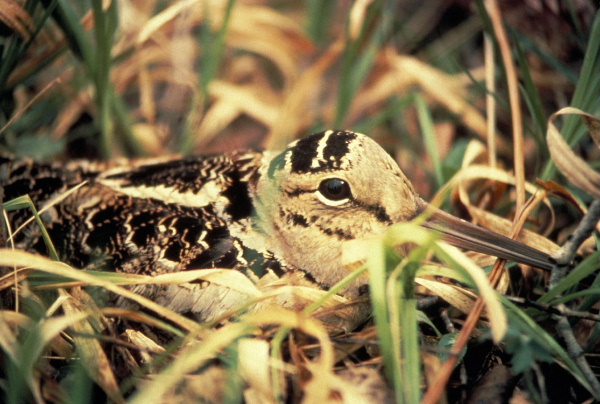American Woodcock
From Wikipedia, the free encyclopedia
[Photo] American Woodcock public domain from USFWS, listed there as Woodcock
The American Woodcock, Scolopax minor, is a small chunky shorebird.
Adults have short pinkish legs and a very long straight bill with an articulated tip. The body is patterned cinnamon on top and a lighter brown underneath. They have large eyes located high in the head. The wings are rounded.
Their breeding habitat is wet wooded areas in eastern North America. They nest on the ground in an open wooded location.
The northern population migrates to the southern parts of its breeding range. Based on the Christmas Bird Count results, winter concentrations are highest in the northern half of Alabama. Their arrival date at the northern parts of their breeding range is highly irregular.
These birds forage by probing in soft soil in thickets, usually well-hidden from sight. They mainly eat earthworms and insects, also plant material. They are crepuscular, being most active at dawn and dusk. Woodcock young are precocial.
The male performs a high spiralling flight during courtship, generating a twittering sound as air moves through its wing feathers. These performances occur over open areas near feeding locations at dawn, dusk, and if the light levels are high enough on moonlit nights. The ritual may be repeated as long as four months running - sometimes continuing even after females have already hatched their brood and left the nest.
American Woodcock, commonly referred to as a "Timberdoodle", is a North American game bird species.
http://en.wikipedia.org/wiki/American_Woodcock
| The text in this page is based on the copyrighted Wikipedia article shown in above URL. It is used under the GNU Free Documentation License. You may redistribute it, verbatim or modified, providing that you comply with the terms of the GFDL. |
|

